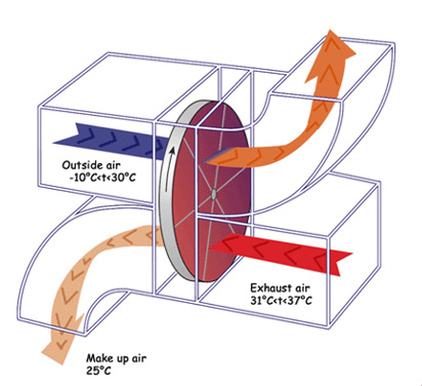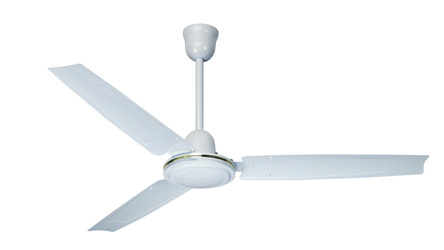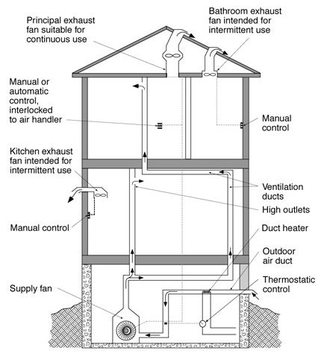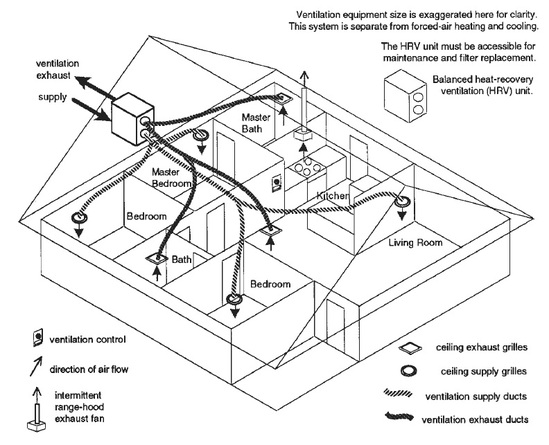MECHANICAL / FORCED VENTILATION
A building ventilation system that uses powered fans or blowers to provide fresh air to rooms when the natural forces of air pressure and gravity are not enough to circulate air through a building. Mechanical ventilation is used to control indoor air quality, excess humidity, odours, and contaminants can often be controlled via dilution or replacement with outside air. However, in humid climates specialised ventilation systems can remove excess moisture from the air.
Ceiling fans are commonly seen as ventilation systems as they are usually the most visible mechanical system in a building; however ceiling fans do not provide real ventilation, as there is no introduction of fresh air. Ceiling fans only circulate air within a room for the purpose of reducing the perceived temperature by method of evaporation of perspiration on the skin of the occupants. Also hot air rises therefore; ceiling fans may be used to keep a room warmer in the winter by circulating the warm from the ceiling to the floor.
Ceiling fans are commonly seen as ventilation systems as they are usually the most visible mechanical system in a building; however ceiling fans do not provide real ventilation, as there is no introduction of fresh air. Ceiling fans only circulate air within a room for the purpose of reducing the perceived temperature by method of evaporation of perspiration on the skin of the occupants. Also hot air rises therefore; ceiling fans may be used to keep a room warmer in the winter by circulating the warm from the ceiling to the floor.
MAIN METHODS OF FORCED VENTILATION:
VACUUM SYSTEM: causing an inrush of fresh air. This is done by an exhaust fan placed at the outlet to the vent flue or stack. The air pressure in the building is slightly lower than that of the outer atmosphere.
However a combination of these two methods can be used to create a BALANCED SYSTEM:
BENEFITS OF BALANCED SYSTEM:
Mechanical ventilation and natural ventilation have many applications where they are used, but in most modern intelligent design both are used for the best effectiveness and efficiency.
- Improved indoor air quality. Balanced ventilation systems supply fresh air to the living and sleeping areas of homes while exhausting stale air at an equal rate from the bathrooms. This proactive approach to ventilation can result in improved indoor air quality.
- Improved comfort. Buildings with tight construction and balanced ventilation systems can have fewer drafts and a constant supply of outdoor air resulting in improved comfort.
- Improved health. Stale air can cause health problems. It can be responsible for symptoms such as headaches, drowsiness, and respiratory problems. These symptoms are more common in homes with poor ventilation and moisture control. Continuously providing fresh air can result in the improved health and well being of the occupants.
- Lower utility bills. Less energy is consumed to operate ventilation systems than to heat and cool excessive amounts of outdoor air that infiltrates leaky homes. Additional savings are captured when these systems are equipped with either a sensible or total heat exchanger. This can result in lower utility bills, making homes less expensive to operate.
- Balanced ventilation systems can be equipped with a heat exchanger that recovers most of the heating and cooling energy from the exhaust air.
Mechanical ventilation and natural ventilation have many applications where they are used, but in most modern intelligent design both are used for the best effectiveness and efficiency.




